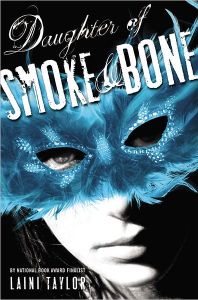 Saturday, June 16, is the first anniversary of Through the Mists of Time. I have presents to give away, but more on that later (see end of post). I can’t believe a year has passed already! Thank you to everyone who continues to come around week after week and listen to me babble. Your support means more than I can say. Hopefully by this time next year I’ll be able to announce an agent and a publishing contract.
Saturday, June 16, is the first anniversary of Through the Mists of Time. I have presents to give away, but more on that later (see end of post). I can’t believe a year has passed already! Thank you to everyone who continues to come around week after week and listen to me babble. Your support means more than I can say. Hopefully by this time next year I’ll be able to announce an agent and a publishing contract.
I’ve been wanting to get to know my readers for quite some time now and what better time than the one year blogiversary? Please tell me a little about yourself in the comments. You can answer any of the questions below or maybe tell me about where you live, how you found Through the Mists of Time, what keeps you coming back, what you like about Arthurian legend. What are your hobbies? Are you a writer, a reader, a history buff or something else? What topics do you want to hear about on this blog? The better I know you, the more I can tailor posts to your likes.
And because it’s only fair, I’ll answer some questions, too. Here’s a little Q&A – yes, I’m interviewing myself. Hey, it’s not any weirder than 99% of the other things that go on in my head. (These questions come from the New York Times Book Review column “By the Book.”)
What book is on your night stand now?
Insurgent by Veronica Roth, Angelology by Danielle Trussoni, Arthur’s Britain by Leslie Alcock and Imagine by Jonah Lehrer. And in my car’s CD player is the audio book Hard Bitten by Chloe Neill.
What was the last truly great book you read?
People of the Book by Geraldine Brooks. She’s an amazing writer with a rare gift to be able to truly transport you in time (through 500 years in this book) and space (several different countries). I learned a lot about recent and Medieval history while reading it and its a truly fascinating tale, based on the true story of a mysterious codex – which I didn’t know when I read it.
Do you consider yourself a fiction or a nonfiction person? What’s your favorite literary genre?
Both. Nonfiction: history and religion, some biographies. Fiction: historical fiction, fantasy (especially urban fantasy), YA (dystopian and paranormal), general fiction, cozy and regular mysteries (Sue Grafton is as hard-boiled as I get), and intellectual thrillers. As a general rule, I stay away from chick-lit and anything marketed as woman’s fiction.
What were your favorite books as a child?
I remember my mom reading a lot of Bearnstien Bears books to me as a child. Francine Pascal’s Sweet Valley Twins and Sweet Valley High books were the books of my pre-teen and teen years. C.S. Lewis’ Chronicles of Narnia series shaped my love of fantasy and I still remember reading The Westing Game by Ellen Raskin in 6th grade. I won’t go into the books we had to read in school that permanently traumatized me (I’m looking at you, Where the Red Fern Grows).
If you could meet any writer, dead or alive, who would it be?
Christopher Marlowe. I think I had a thing for him in a past life. I’d also love to know if there’s any truth to the conspiracy theory that he didn’t really die in a bar fight and that he was actually Shakespeare. I doubt it, but I like the idea.
—-
**GIVEAWAY DETAILS
I’m giving away a copy of The Art and Craft of Writing Historical Fiction by James Alexander Thom and the Mutefish CD On Draught. (Remember them from my Ireland travelogue? No, it’s not my CD. This one is still in the shrink wrap.) If you’re interested in either gift, let me know in the comments and I’ll pick names out of a hat (please include your email address so I can contact you). Because I’ve combined two posts, I’m keeping this one up for a week, so you have until June 20 to comment and qualify to win.
Even if you don’t want the gifts, please say hi and tell me a little about yourself. I look forward to getting to know you!

 Recently, CBS Sunday Morning did a piece on how
Recently, CBS Sunday Morning did a piece on how 

 Even though today we automatically think of Excalibur as linked with Avalon and the Lady of the Lake, the earliest Celtic Arthurian legends don’t include that part. Although they could have. It was common in Celtic myth for a young would-be warrior to be given his weaponry by a goddess-like woman.
Even though today we automatically think of Excalibur as linked with Avalon and the Lady of the Lake, the earliest Celtic Arthurian legends don’t include that part. Although they could have. It was common in Celtic myth for a young would-be warrior to be given his weaponry by a goddess-like woman.
 “Once upon a time, an angel and a devil fell in love. It did not end well.”
“Once upon a time, an angel and a devil fell in love. It did not end well.”







